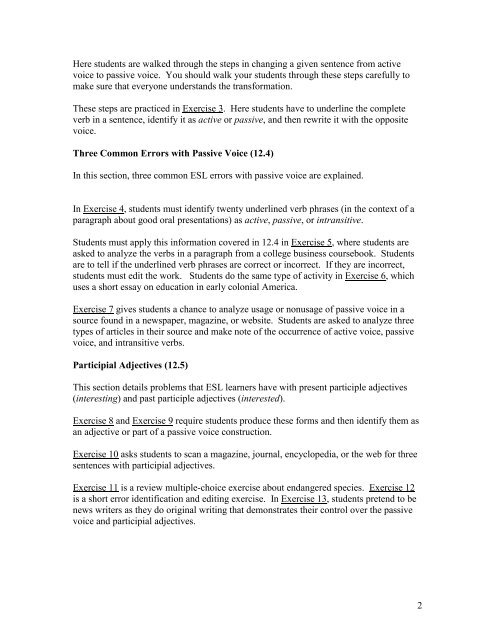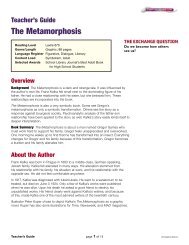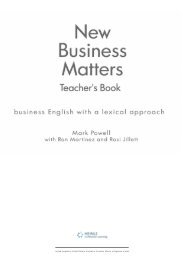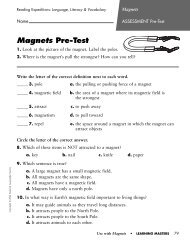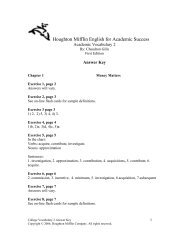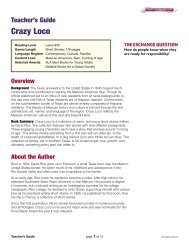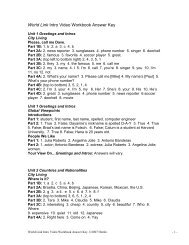Top 20, Great Grammar for Great Writing, First Edition Teaching Notes
Top 20, Great Grammar for Great Writing, First Edition Teaching Notes
Top 20, Great Grammar for Great Writing, First Edition Teaching Notes
You also want an ePaper? Increase the reach of your titles
YUMPU automatically turns print PDFs into web optimized ePapers that Google loves.
Here students are walked through the steps in changing a given sentence from activevoice to passive voice. You should walk your students through these steps carefully tomake sure that everyone understands the trans<strong>for</strong>mation.These steps are practiced in Exercise 3. Here students have to underline the completeverb in a sentence, identify it as active or passive, and then rewrite it with the oppositevoice.Three Common Errors with Passive Voice (12.4)In this section, three common ESL errors with passive voice are explained.In Exercise 4, students must identify twenty underlined verb phrases (in the context of aparagraph about good oral presentations) as active, passive, or intransitive.Students must apply this in<strong>for</strong>mation covered in 12.4 in Exercise 5, where students areasked to analyze the verbs in a paragraph from a college business coursebook. Studentsare to tell if the underlined verb phrases are correct or incorrect. If they are incorrect,students must edit the work. Students do the same type of activity in Exercise 6, whichuses a short essay on education in early colonial America.Exercise 7 gives students a chance to analyze usage or nonusage of passive voice in asource found in a newspaper, magazine, or website. Students are asked to analyze threetypes of articles in their source and make note of the occurrence of active voice, passivevoice, and intransitive verbs.Participial Adjectives (12.5)This section details problems that ESL learners have with present participle adjectives(interesting) and past participle adjectives (interested).Exercise 8 and Exercise 9 require students produce these <strong>for</strong>ms and then identify them asan adjective or part of a passive voice construction.Exercise 10 asks students to scan a magazine, journal, encyclopedia, or the web <strong>for</strong> threesentences with participial adjectives.Exercise 11 is a review multiple-choice exercise about endangered species. Exercise 12is a short error identification and editing exercise. In Exercise 13, students pretend to benews writers as they do original writing that demonstrates their control over the passivevoice and participial adjectives.2


